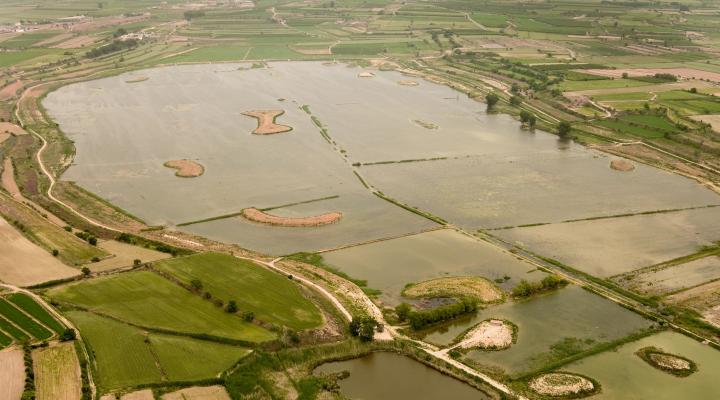
Ivars and Vila-sana lake
"Water is life" is an affirmation that makes singular sense in the case of the Ivars and Vila-sana lake. Located in the heart of the Pla d'Urgell region, in the land of the dry land, the lake energised social, cultural and economic life, until it was dried up in 1951 to turn the land into arable land. Known everywhere for the abundance of water birds, in recent years the lake has become one of the most emblematic wetlands in Catalonia, thanks to an ambitious recovery project requested from the population itself and encouraged by the lasting memory of the landscape it used to be.
ALL THE SPACES IN THE NETWORKGeology
This lake is located on the centre edge of the Ebro basin. This basin was filled with sediment during the Tertiary period, at the same time as Alpine orogenesis was raising the Pyrenees to the north and the Prelitoral mountain range to the south and southeast. In the beginning, it was occupied by the sea and sea sediments were deposited there. Little by little, this basin closed and plaster and salts were deposited. Finally (in Oligocene) it was completely closed and it was filled with continental sediments.
In general, the morphology is very smooth with few prominent terrains. The Ebro river and its tributaries run there, the most important being the Segre. In this area, the landscape is very flat, and the sediments contributed by the rivers (sands and gravels) abound. This morphology of a river plain, favours the existence of lagoons, like the one in Ivars.
It is an endorheic, seasonal lagoon, originally from brackish water, of which there were many in the Ebro depression and this was the largest in Catalonia. By 1862 this area was converted into a large irrigation reservoir, coming from the recently constructed Canal d'Urgell. It is, therefore, an example of a living, humanised landscape.
